Test Drive: Porsche 911 Carrera 4 GTS Cabriolet (991.1) – How Different Is It from the Coupe?
公開日:2021.12.05

コンテンツ
911 Carrera 4 GTS Cabriolet
This time, I had the chance to test drive the 991.1 (early 991) Carrera 4 GTS Cabriolet. The name is a bit of a mouthful, but to sum it up, it’s the all-wheel-drive GTS model in an open-top version—basically the convertible counterpart to my own Carrera 4 GTS coupe.
It’s an extremely rare model. Just the Carrera 4 GTS and the AWD GTS are already scarce, but add the convertible roof and you get a very limited number of these cars in existence. This review focuses on this rare model, highlighting the differences compared to my own Carrera 4 GTS coupe and the 981 Boxster GTS.
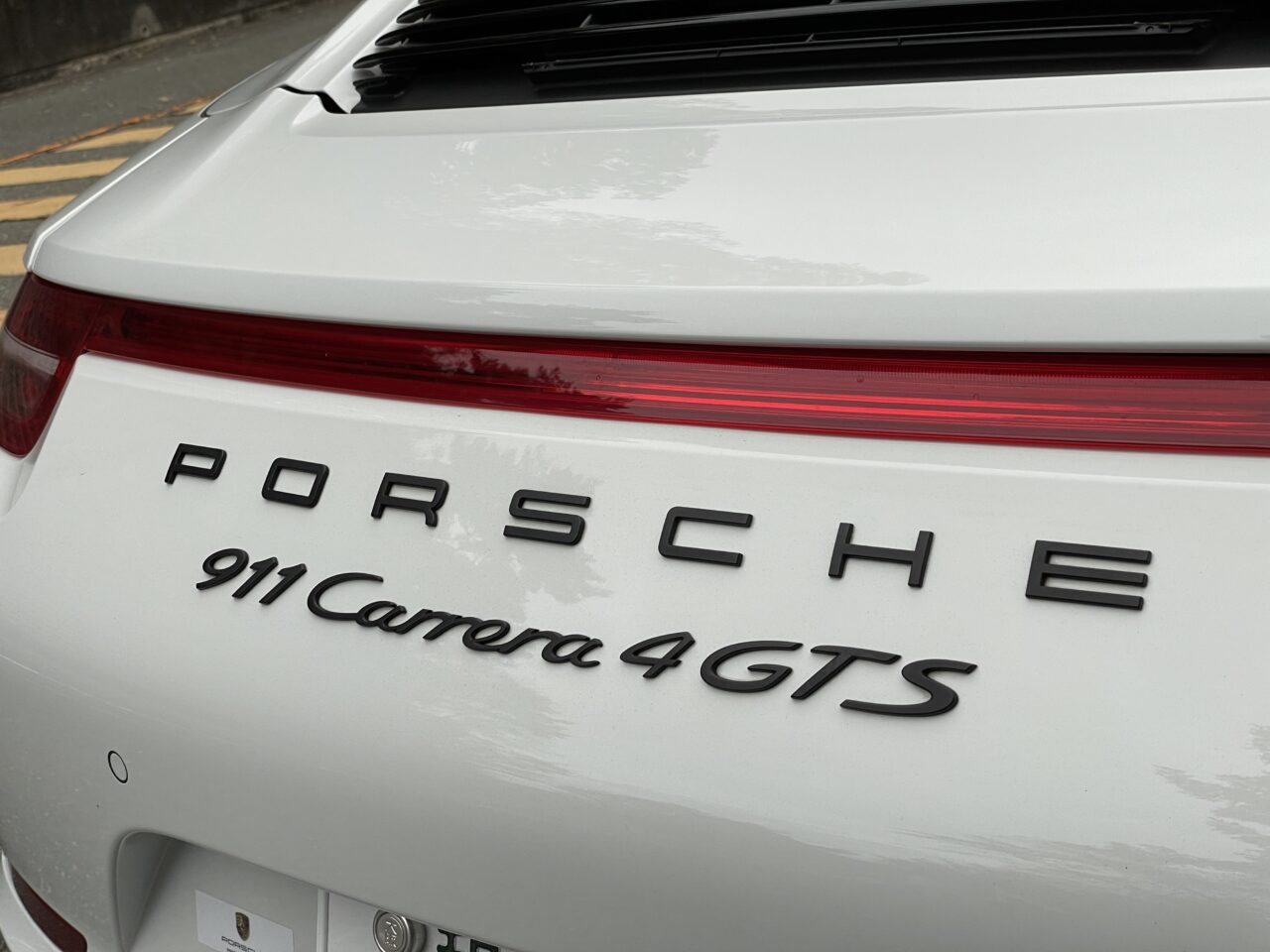
Engine Sound
When you start the engine, you get that lively startup sound unique to the GTS. The tachometer needle jumps instantly to around 2000 rpm and the engine lets out a “Vrooom!” just like the coupe.
However, with the roof down, the sound is a bit different from the coupe. You hear more of the exhaust note directly, which makes it feel richer. Compared to the 981 Boxster GTS, the sound is not just slightly lower but thicker, reflecting the extra 400cc displacement.
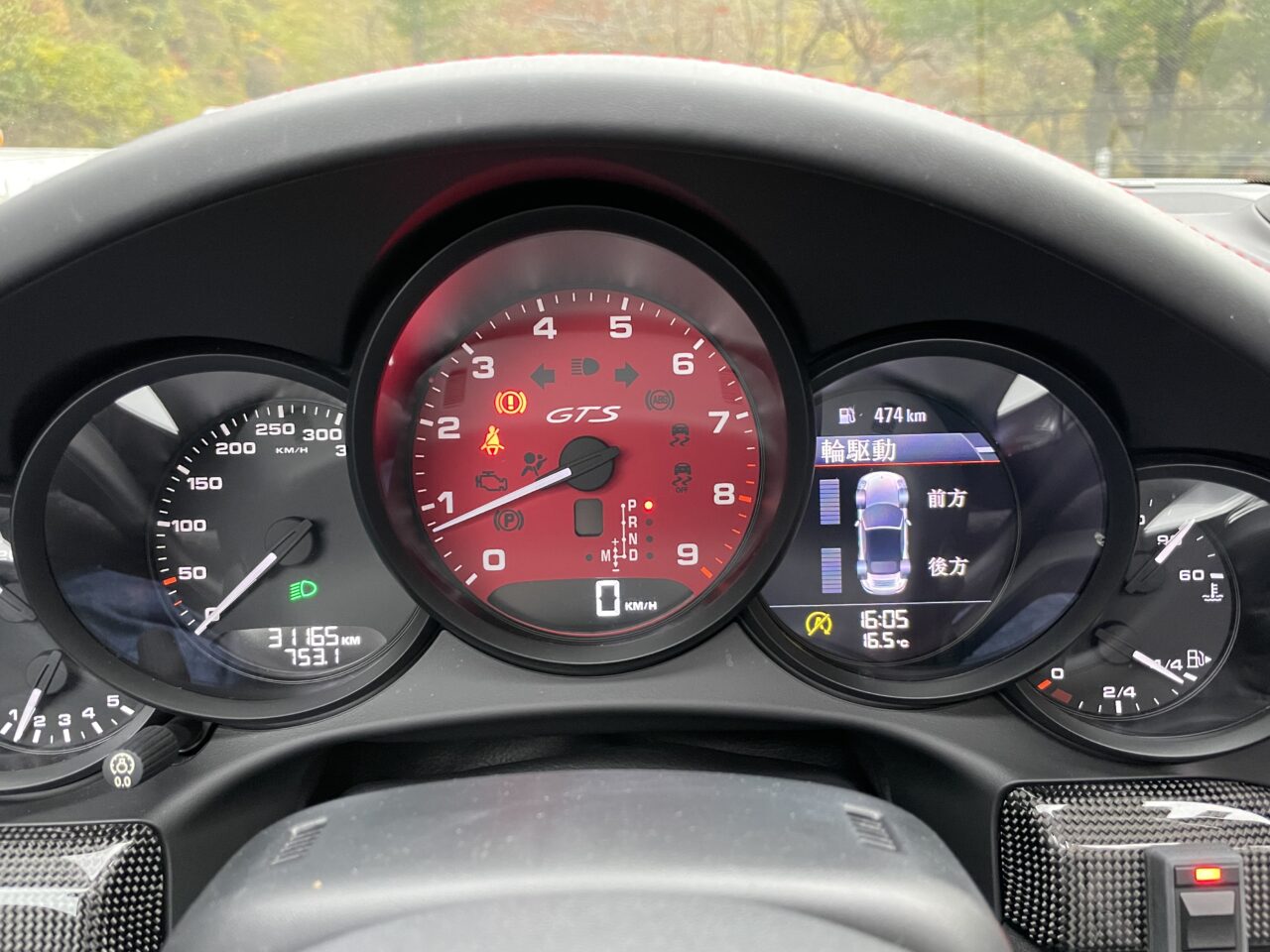
Driving in Normal mode, the sound isn’t overly aggressive. Even at low revs, the engine delivers a pleasant tone, with speed, torque, and the natural pitch changes of the NA engine perfectly in sync, making driving genuinely enjoyable.
Switch to Sport mode and open the valves of the sports exhaust, and that’s when the GTS really shines. I’ve compared it directly with the Carrera S Cabriolet equipped with the sports exhaust, and the difference is clear. The GTS sounds thicker and more powerful—not just louder, but with a commanding presence.
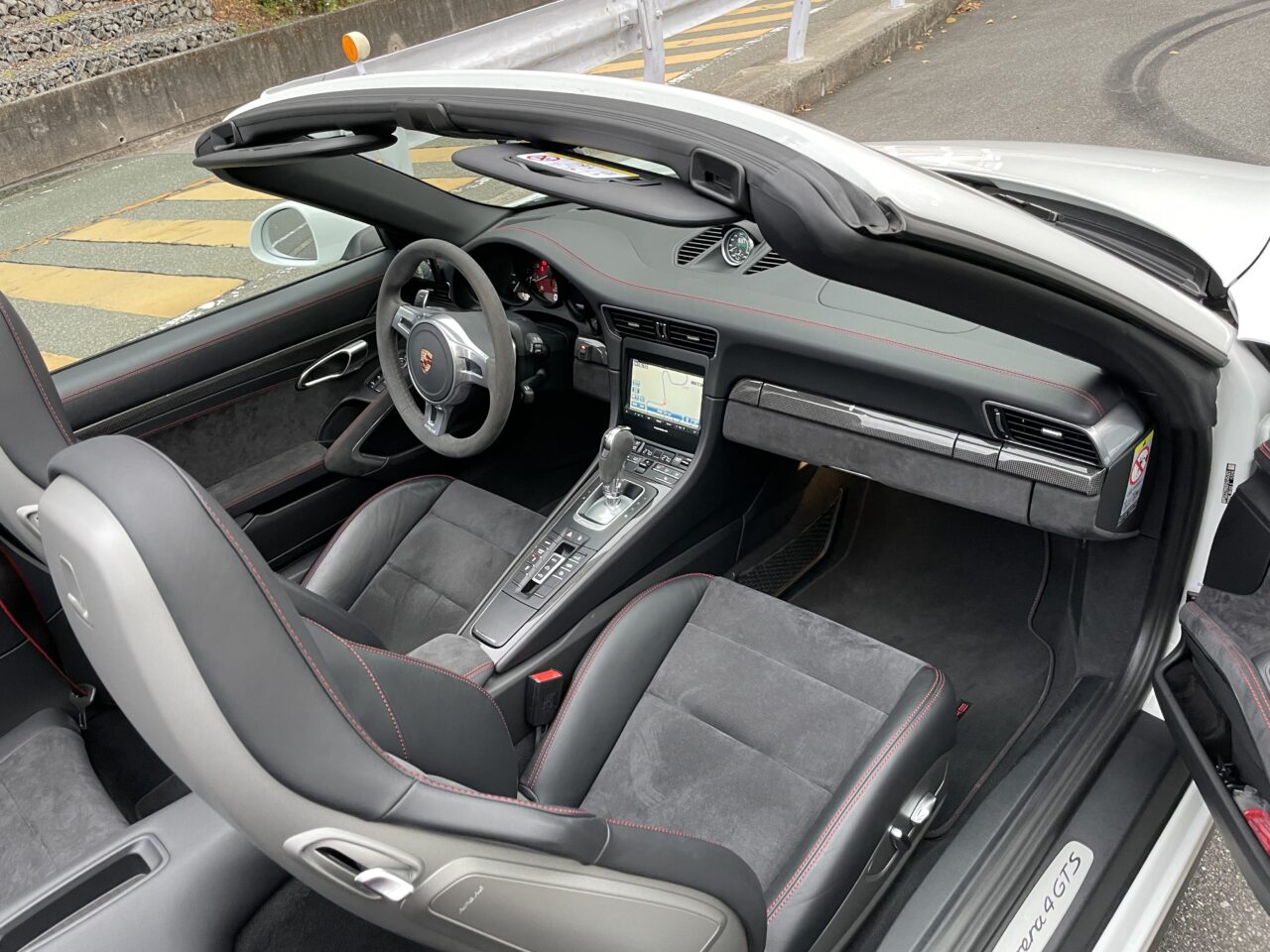
With the roof open, the exhaust note comes directly from the rear to the driver, which is truly exhilarating. The burbling sound is also clearer than in the coupe, so if you want to enjoy the exhaust sound, the Cabriolet is the better choice.
On the other hand, the coupe emphasizes intake noise more, with a “Gwooon!” that resonates nicely inside the well-sealed cabin and off the rear glass. That sound is exciting in its own way.
Comparing the GTS Cabriolet to the 981 Boxster GTS, the 981 is louder and has more pronounced burbling. In contrast, the 991.1 GTS sounds a bit more mature and refined.
Still, the 991.1 GTS is quite loud by Porsche standards, so if you find the 981 too loud or flashy, the 991.1 might suit you better.
Power Feel
The engine is a 3.8L flat-six NA unit producing 430 ps, about 30 ps more than the S. This high-tuned engine delivers roughly 113 ps per liter and features upgraded cylinder heads, camshafts, and a variable resonance intake system—equivalent to the power kit available for the S.
However, the 30 ps difference isn’t very noticeable in everyday driving. The difference is more apparent in the sound and the smooth high-revving character.
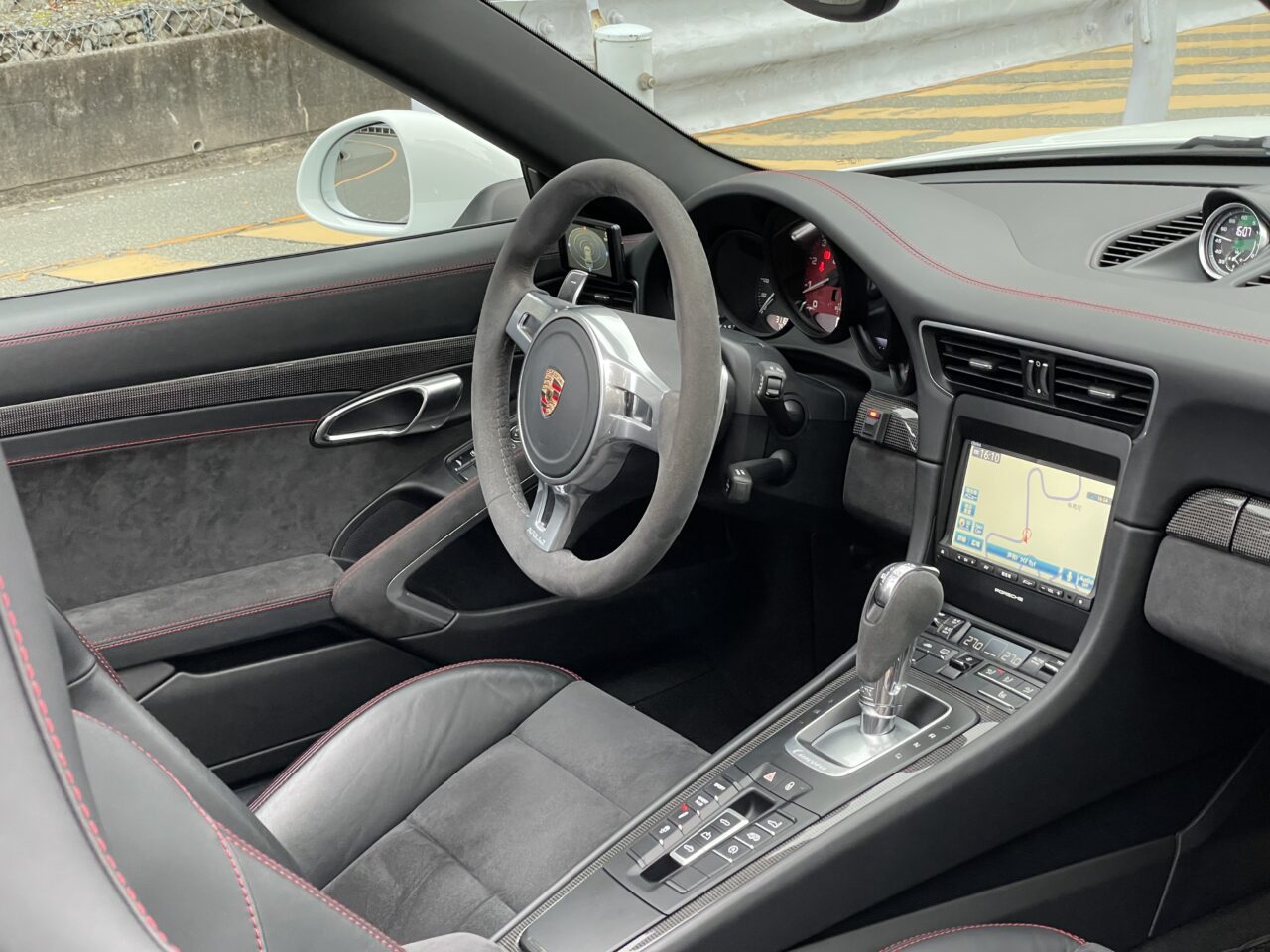
Compared to the coupe GTS, the Cabriolet feels just a little less sharp in acceleration. This is especially noticeable when you shift quickly to second gear after launching and continue accelerating. The extra weight of the Cabriolet likely accounts for this, making the acceleration feel slightly gentler than the coupe. Still, it’s a top-tier performer.
Compared to the 981 Boxster GTS, the lighter Boxster (about 200 kg less) feels quicker off the line. But once you’re up to speed, the 430 ps power advantage of the 911 is unmistakable.
Driving Feel
Now, let’s get to the heart of this car: Is there a difference between the Cabriolet and the coupe?
I drive a 992 Carrera Cabriolet, and in the 992 generation, the difference between coupe and Cabriolet is minimal. The Cabriolet’s rigidity is very high, and it holds up perfectly on the track, maintaining incredible grip and allowing aggressive driving with confidence.
By comparison, the early 991 Cabriolet isn’t quite as rock-solid. This particular car has the optional Power Steering Plus, which makes the steering feel light from the start, lacking the heavy, solid feedback you might expect.
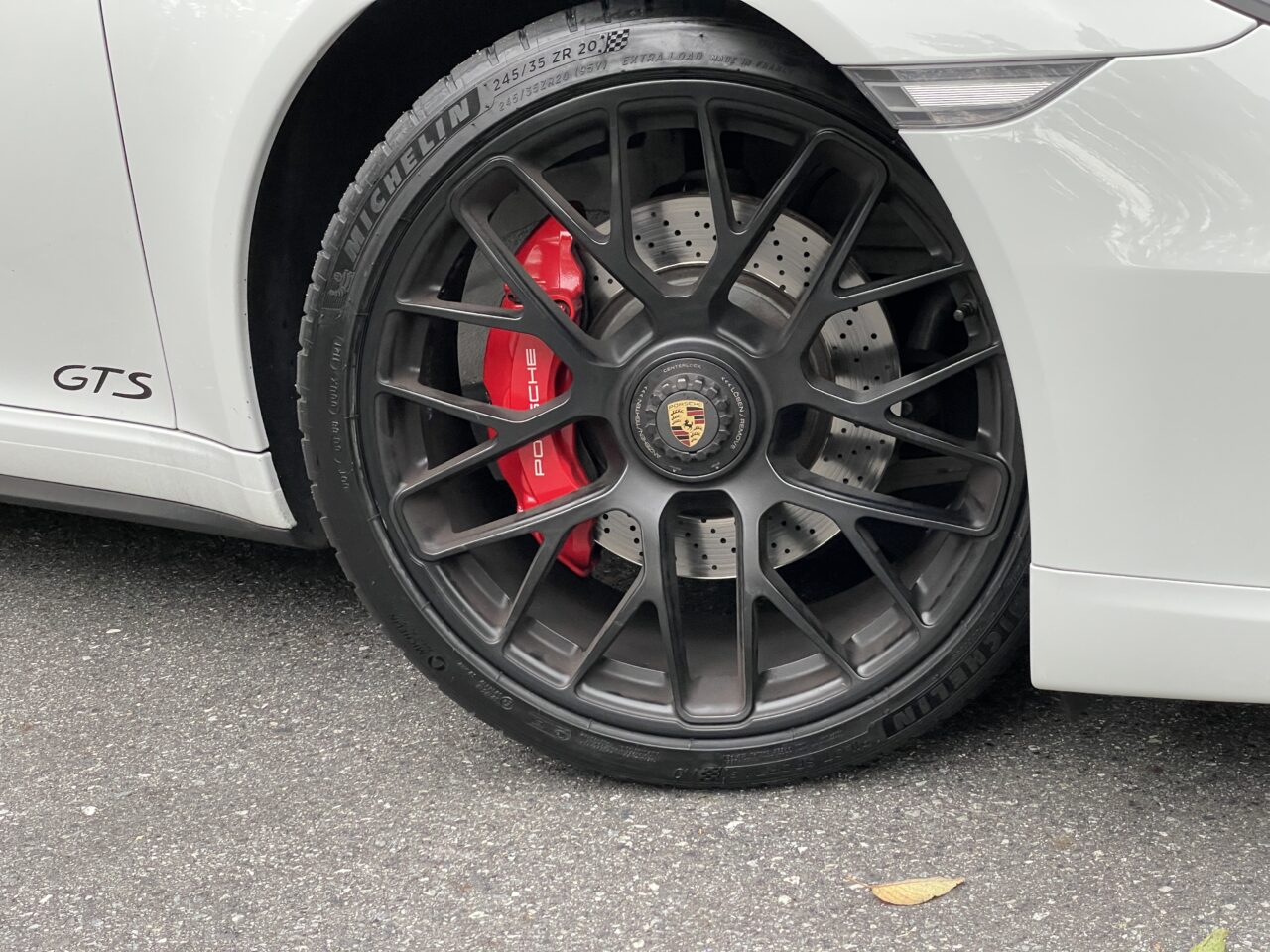
That doesn’t mean the body creaks or feels loose. When driving, the grip isn’t as aggressive as the coupe’s “clawing” contact patch but is gentler and more supple. This is different from the Targa’s feel as well.
The suspension isn’t soft, so road impacts should be sharp like the coupe’s, but it feels like the body’s openings absorb some of the leftover vibrations the suspension can’t handle. As a result, the ride is very supple, and in terms of comfort, it’s closer to the 981 Boxster with PASM.
Currently, this car wears brand-new Michelin Pilot Sport 4S tires, but it previously had Pirelli P-Zeros. I’ve driven it with both, and the Pilot Sport 4S offers superior comfort, handling, roundness, and less roughness.
Someone once called these tires “tires made by the gods,” and that’s exactly right. If you’re unsure about tire choice, the Pilot Sport 4S is the clear winner.
Turning into corners, the front-end response is also a bit milder than the coupe’s. Again, it’s similar to the 981 Boxster’s feel. You clip the apex and get on the throttle, where the AWD system really shines. Just like the coupe, you can confidently floor the accelerator, and the front torque distribution keeps the car stable, allowing quick exits from corners.
This control is outstanding, and the pace you can maintain here is very different from driving the 981. Plus, it gives the driver a mental edge—you can hum along while driving at a pace that would push the Boxster to its limits.

Reading this, you might think, “The 911 is better than the Boxster, after all.” But Porsche isn’t that simple. Sure, the 911 might be faster on a circuit.
However, fun and speed aren’t the same, and the kinds of fun differ.
There’s the analog joy of handling a mid-engine Boxster, and then there’s the overwhelming stability created by the 911 Carrera 4 GTS’s AWD and PTV (torque vectoring). Both offer unique pleasures.
Sometimes, first-time Porsche buyers start looking for a Boxster or Cayman but then switch to a 911 simply because it fits their budget. That’s their choice, but it’s often why people end up buying again later.
Remember, a higher price doesn’t always mean more fun.
What’s fun depends greatly on the style the buyer seeks. Clarifying what you enjoy and value will help you avoid regrets.
Recommended For
To circle back, there’s definitely a clear difference in character between the early 991 Cabriolet and coupe.
If you want a strictly sporty driving experience, I recommend the coupe. But if you prioritize ride comfort and a lighter feel, and want to enjoy mountain or coastal roads at a brisk pace, the Cabriolet is the way to go.
That said, if you’re unsure, I’d recommend the Cabriolet. The open-air freedom and sense of occasion you get with the Cabriolet can’t be matched by the coupe, and for everyday driving, its performance is more than enough.
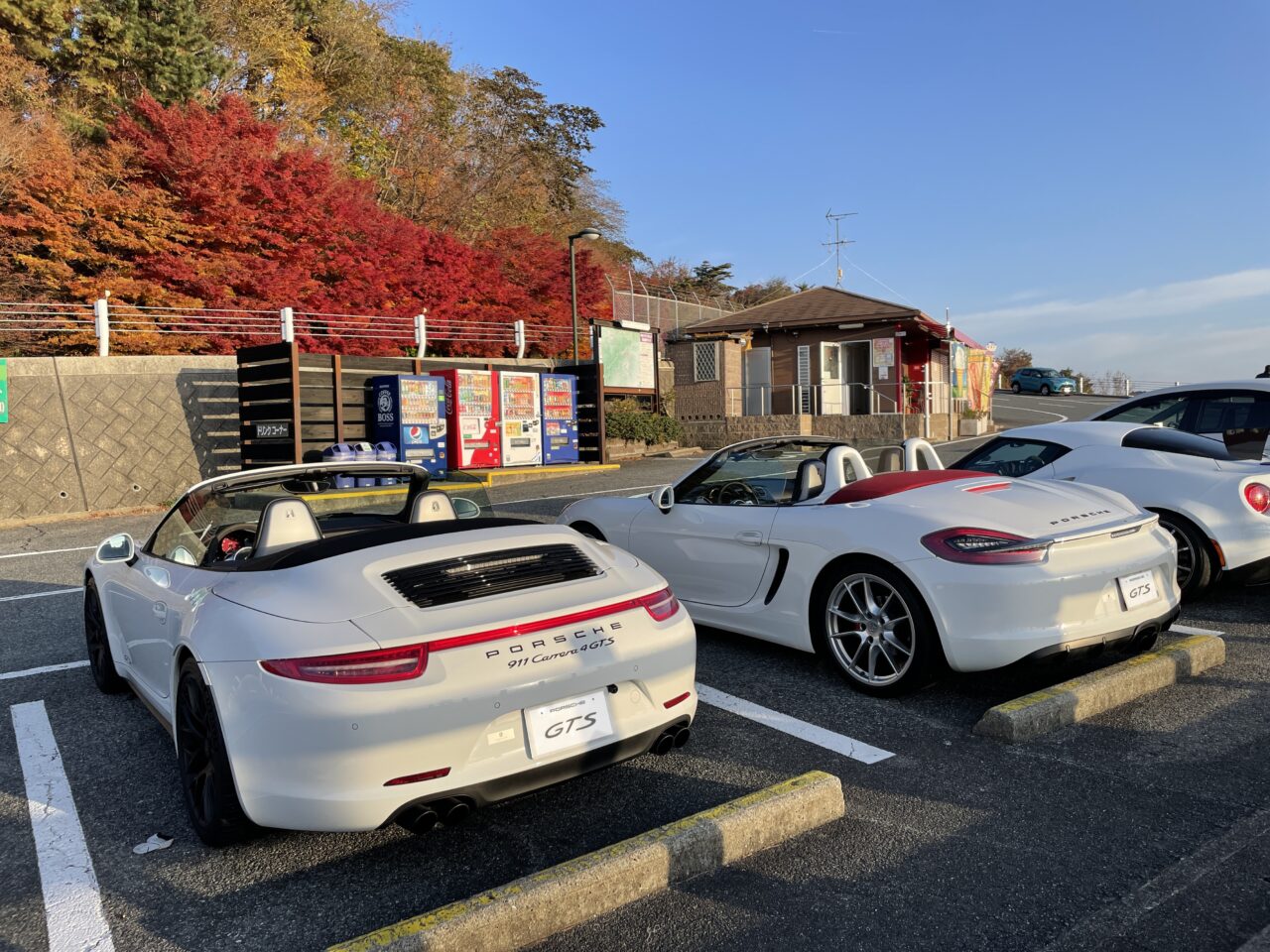
That said, I bought the coupe myself because I already own another Cabriolet and didn’t want too much overlap, plus I’m considering some track use. But if it were my first Porsche, I’d start by looking for a Cabriolet.
The 911 Carrera 4 GTS Cabriolet is very rare, so if you see one on the used market and you’re hesitating, I’d advise acting quickly.
このブログが気に入ったらフォローしてね!


Comment ( 0 )
Trackbacks are closed.
No comments yet.